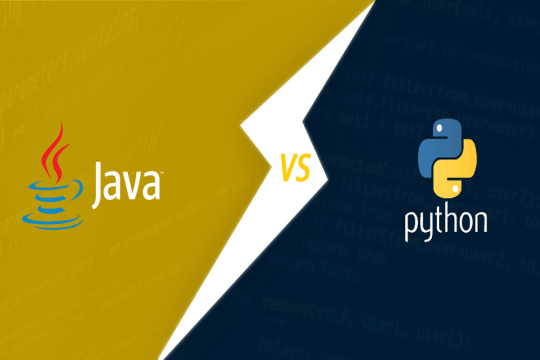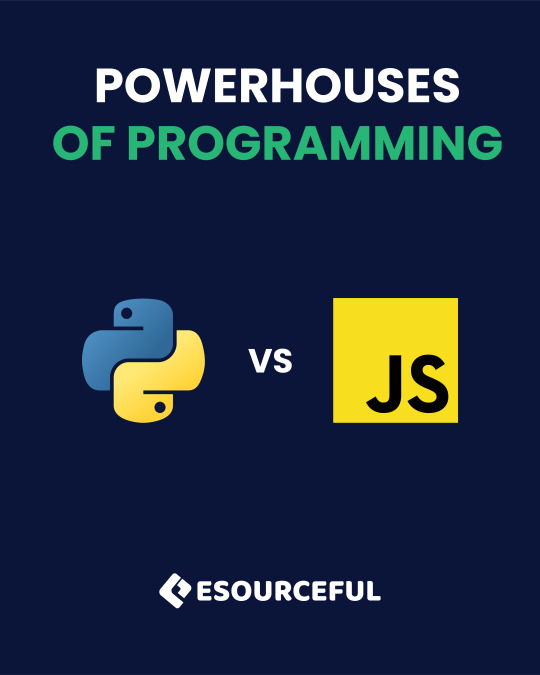#CodingComparison
Explore tagged Tumblr posts
Text
Java vs JavaScript: What’s the Difference?

Java and JavaScript Introduction
Java vs JavaScript: What’s the Difference? Many beginners assume these two programming languages are related due to their similar names, but in reality, they serve entirely different purposes. Java is a powerful, object-oriented language widely used for enterprise applications and Android development, while JavaScript is a lightweight, web-focused language primarily used for creating interactive websites. Understanding their differences is crucial for anyone starting their programming journey at TCCI-Tririd Computer Coaching Institute.
Let's understand their differences in a simple structured way!
What is Java?
Java is a general-purpose, object-oriented programming language that was invented in 1995 by Sun Microsystems (now owned by Oracle). It follows the principle “Write Once, Run Anywhere” (abbreviated as WORA), which means that the Java code can run in multiple platforms without getting altered.
Uses of Java:
Enterprise applications (Banking, Healthcare, Retail)
Mobile application development (Android apps)
Backend development (Spring, Hibernate frameworks)
Game development
Internet of Things (IoT)
What Is JavaScript?
JavaScript is basically a lightweight, interpreted programming language for web development. It is created by Brendan Eich of Netscape in 1995. The aim of this language is to improve user interactivity for web browsers. Unlike Java, JavaScript runs inside the browser and thus doesn't require any compilation.
Uses of JavaScript:
Front-end web development (React.js, Angular, Vue.js)
Backend development (Node.js)
Mobile and desktop applications
Game development
Server-side scripting
Main Differences Between Java and JavaScript
1. Syntax and Structure
Java is static typed- You have to declare types of variable explicitly.
JavaScript is dynamic typed: variable types are determined at runtime.
2. Execution Environment
Java is platform independent because it runs on a Java Virtual Machine (JVM).
JavaScript run-time is either a browser or Node.js running for backend applications.
3. Usage and Application Areas
Java is mainly meant for enterprise applications and Android development and also large systems.
JavaScript is majorly used in frontend web development and interactive web elements.
4. Performance and Speed
Java is faster because it gets compiled into byte code before execution.
JavaScript is interpreted, so it is not as fast as Java, but it is more flexible.
5. Object-Based Versus Prototype Based
Java follows class-based object-oriented programming while JavaScript is prototype-based, allowing for more dynamic manipulation of objects.
Java vs JavaScript: Which One Should be Learned?
Career Opportunities
Learning Java might ear you jobs in software development, mobile app development, and backend programming.
Learning JavaScript is an entry key for web developers, full-stack developers, and front-end engineers.
Best Use Cases
Java: if you want to work in an enterprise application, Android apps, and backend systems.
JavaScript: if you want to work in making interactive websites, frontend applications, or in projects that are full stack web.
Final Thoughts
Java and JavaScript are different in function and application. If you're planning to specialize in enterprise-level applications or Android development, go for Java. However, if your interest lies in web development and interactive web applications, JavaScript is for you.
At the TCCI-Tririd Computer Coaching Institute, we offer courses in both Java and JavaScript, ensuring that our students learn the latest industry skills and get practical experience.
Location: Bopal & Iskon-Ambli Ahmedabad, Gujarat
Call now on +91 9825618292
Get information from: https://tccicomputercoaching.wordpress.com/
#JavaVsJavaScript#CodingComparison#LearnProgramming#JavaScriptDevelopment#JavaProgramming#TCCIComputerInstitute
0 notes
Text
Java vs Python – Which programming language is good?

For a few decades now, Java vs Python both have been around and so has the debate of which is better. We are all entitled to our opinions and I am here to help you make your decisions by pointing out the pros and cons of both the languages.
Similar to many other programming languages these are commonly used to create basic applications or customised software products.
Let us take a side by side comparison of both the languages.
The all-rounder
Java, although takes a little more effort to learn, runs on any OS platform without any indifference. Java is popularly known as WORA (Write Once Run Anywhere). However, both Java and Python do compile as bytecode. The main difference is that Java is a compiling language whereas Python is an interpreted language that executes codes by line.
Its all in the CODE!
Beginners have always found Python as a smoother teacher. It appears as an intuitive coding style that has simpler syntaxes in comparison to Java.
Python uses whitespaces to mark the beginning and end of the blocks of code. Java, however, uses braces for the same purpose.
Python comparatively uses few lines of code as it does not include braces, and uses white space to mark the start & closings of a module.
The deal with Variables.
Java does not allow the data type of a variable to be changed, while Python does. Unlike traditional programming languages, Python allows you to assign a string to a variable that once held an integer value. This is not possible with the statically typed language Java, where you have to declare the variable names and their type in an explicit manner. On the contrary, Python is looked upon as a dynamically typed language that doesn’t stress this.
Unlike the traditional programming languages, Python lets you assign the new value to a variable that previously stored a different value. This is not possible with Java, and you need to define a variable for each corresponding type.
On the other hand, Python is simpler & more forgiving than Java even in simpler cases as such reusing old variables.
The Flash Test — Speed & Portability
JComparing both languages, their speed and performance varies. Java is notably faster than Python. However, it cannot handle CPU intensive tasks, as it executes an entire class and not by lines. But with the choices at their disposal, they can replace Python’s runtime with CPython, PyPy, Cython. Java does not need additional tools for optimisation.
Python has tons of modules and a quick learning progress that allows you to manipulate it so that it could do almost anything for you added it being an open source language.
In terms of Java, being platform independent it lets you run your code on any machine that supports JVM. And because of its popularity, the JVM is already installed in most systems.
Make a choice !
Albeit, novices choose Python as you can see what the outcome will be immediately. Professionals prefer Java as it is used for complex applications and software development invariably across platforms.
If you are interested in becoming a developer or an architect or data science engineer then Java fits you. In case you are interested in the role of modern developers and fields such as Robotics and AI then you should master Python.
In conclusion we are telling you, do not limit yourself to one language.
#JavaVsPython#ProgrammingLanguages#CodingComparison#JavaProgramming#PythonProgramming#LearnToCode#CodingForBeginners#DynamicTyping#StaticTyping#ProgrammingSpeed#DeveloperLife#DataScience#SoftwareDevelopment#AI#Robotics#OpenSource#JavaVsPythonDebate#TechLearning#CodeEfficiency#CodingTips
0 notes
Text
The Evolution of Coding: A Journey through Manual and Automated Methods
In the ever-evolving landscape of technology, coding stands as the backbone of innovation. From its humble beginnings rooted in manual processes to the era of automation, the journey of coding has been nothing short of fascinating. In this blog, we embark on a retrospective exploration of the evolution of coding methods, tracing the transition from manual to automated approaches.
The Dawn of Manual Coding:
Before the advent of sophisticated tools and automated processes, coding was predominantly a manual endeavor. Programmers painstakingly wrote code line by line, meticulously debugging and optimizing their creations. This era witnessed the emergence of programming languages like Fortran, COBOL, and assembly language, laying the groundwork for modern computing.
Manual coding required an intricate understanding of the underlying hardware architecture and programming concepts. Developers wielded their expertise to craft intricate algorithms and applications, often pushing the boundaries of what was thought possible. However, the manual approach was labor-intensive and prone to errors, leading to the quest for more efficient methods.
The Rise of Automation:
The evolution of coding took a significant leap with the introduction of automated tools and frameworks. Languages like C, Java, and Python democratized programming, offering higher-level abstractions and built-in functionalities. Developers could now focus on solving problems rather than getting bogged down in low-level implementation details.
One of the pivotal advancements in coding automation was the rise of Integrated Development Environments (IDEs). These software suites provided a comprehensive environment for coding, debugging, and project management, streamlining the development process. IDEs like Visual Studio, Eclipse, and PyCharm became indispensable tools for developers worldwide, boosting productivity and collaboration.
Furthermore, the advent of version control systems such as Git revolutionized collaborative coding practices. Developers could now work concurrently on the same codebase, track changes, and resolve conflicts seamlessly. This fostered a culture of collaboration and accelerated the pace of software development.
The Era of AI and Machine Learning:
As technology continues to advance, coding is undergoing yet another paradigm shift with the integration of Artificial Intelligence (AI) and Machine Learning (ML). Automated code generation, predictive analytics, and intelligent debugging are becoming commonplace, augmenting the capabilities of developers.
AI-powered coding assistants, such as GitHub Copilot and TabNine, leverage vast repositories of code to provide context-aware suggestions and autocomplete functionality. These tools empower developers to write code faster and with fewer errors, unlocking new possibilities in software innovation.
Moreover, Machine Learning algorithms are being employed to automate mundane coding tasks, such as code refactoring and optimization. By analyzing patterns and best practices from existing codebases, ML models can suggest improvements and identify potential bottlenecks, saving time and effort for developers.
The evolution of coding has been a journey marked by innovation and transformation. From manual coding practices to the era of automation and AI, developers have continually adapted to embrace new technologies and methodologies. As we look towards the future, the fusion of human creativity with machine intelligence promises to redefine the boundaries of what can be achieved through coding.
0 notes
Text
Python vs JavaScript

Python vs JavaScript: Which Reigns Supreme? Top 5 Features You Need to Know!
View as PDF here
#Python#JavaScript#Programming#PythonVsJavaScript#CodingComparison#CodingLanguages#PythonFeatures#JavaScriptFeatures#TechCommunity#esourceful
1 note
·
View note